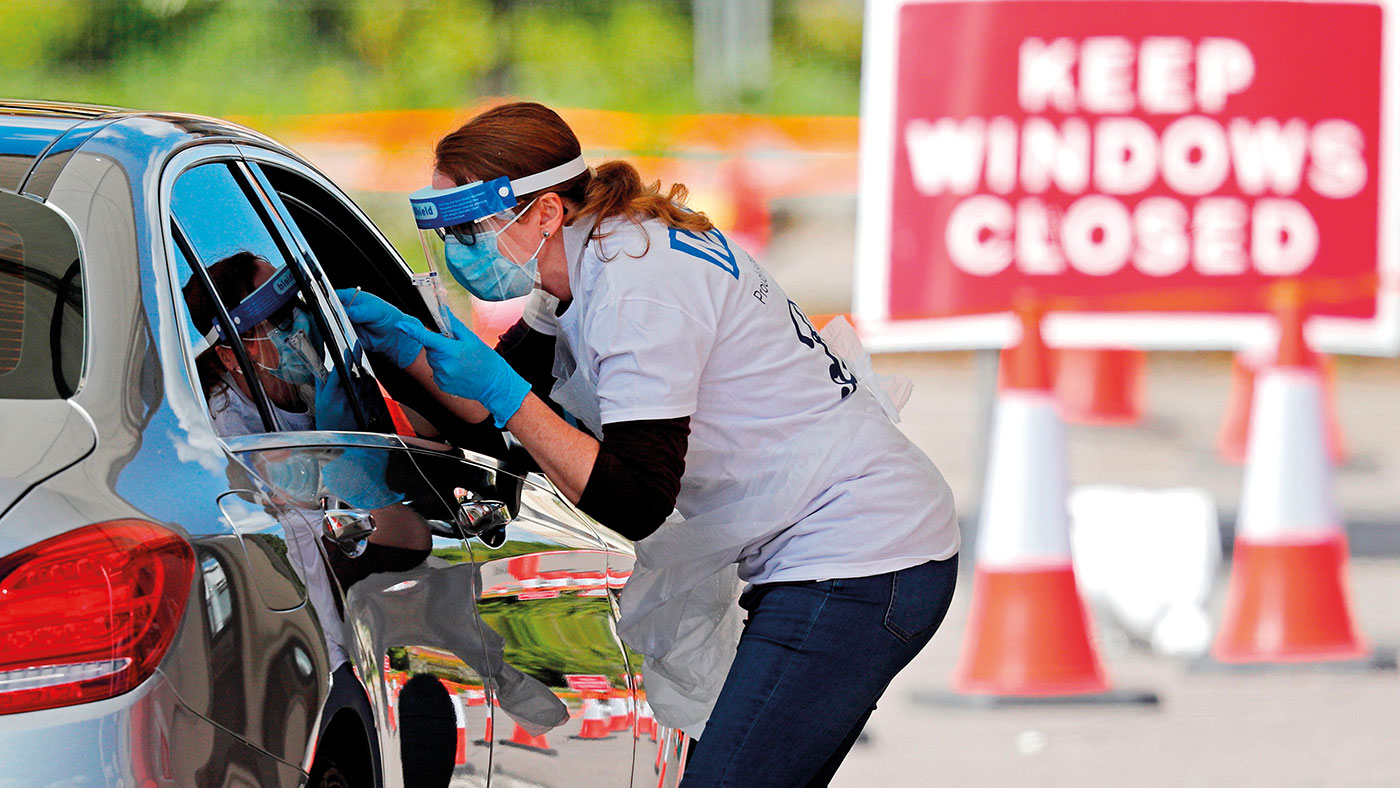Bad data is driving fear of a second wave of Covid-19
The recent spike in Covid-19 “cases” is very different to the original outbreak, says James Ferguson of MacroStrategy Partnership. The government needs to calm down.

Covid-19 cases are on the rise again, particularly amongst the young. The “rule of six” is now nationwide. Localised lockdowns are in place up north. And even martial-law-style 10pm curfews are being considered. So-called “pillar 2” cases from the wider community – where “cases” are a misnomer for “positive” test results – have doubled in the last two weeks from about 2% to roughly 4%. Is this the long-awaited second wave? And once all these infected young northerners visit their grandfathers (ill, elderly men are particularly vulnerable), will it turn into an increase in deaths too?
This seems to be what our politicians fear – hence their aggressive response. However they are making some major mistakes. One is the policy direction itself – the correct response is not a lockdown of the general population, but shielding of the vulnerable. The other is in misinterpreting the data. “Positives” are not the same as “cases” (the latter require both symptoms and a doctor’s diagnosis).
This leads to a dilemma because, as you can see from the chart on page 23 (which runs to 12 September), although positives have leapt sevenfold from their June-July low, deaths over the same period have fallen by two thirds.
MoneyWeek
Subscribe to MoneyWeek today and get your first six magazine issues absolutely FREE

Sign up to Money Morning
Don't miss the latest investment and personal finances news, market analysis, plus money-saving tips with our free twice-daily newsletter
Don't miss the latest investment and personal finances news, market analysis, plus money-saving tips with our free twice-daily newsletter
The epidemiological rule-of-thumb is that the number of (unseen) infections will be roughly ten times the number of diagnosed cases, which in turn will be roughly ten times greater than the number of deaths. Working backwards from deaths, and taking account of the three-week period of illness, we would expect the UK to have about 2,500 diagnosed cases, of which half would be hospitalised (the government currently reports just 972 hospital patients). That would also suggest 25,000 current infections, or disease prevalence (ie, the percentage of the population who has it) of sub-0.04%.
Yet the pillar 2 community-testing scheme is now finding 4% positives. In other words, the test regime seems to be finding 100 times more positives than the combined data on diagnosed cases, hospital admissions and deaths would suggest. That begs the question: how many of these are false positives?
Why false positives really matter
It might surprise you to learn that a positive medical test result does not often – or even usually – mean that an asymptomatic patient has a disease. If the false positive rate (FPR) is the same as the prevalence of the disease, then half of all positives will be false. And the lower the prevalence compared to the FPR, the more inaccurate the results will be. Even doctors don’t tend to grasp the full implications of that.
In 1982, a researcher called David Eddy provided physicians with a diagnostic puzzle. Women age 40, participate in routine screening for breast cancer, with a prevalence of 1%. The mammogram test has a false negative rate of 20% and an FPR of 10%. What is the probability that a woman with a positive test has breast cancer? The correct answer is just 7.5%.
In each batch of 100,000 tests, 800 cases (80% of the 1,000 women who actually have breast cancer) will be picked up. But so too will 9,920 (10% FPR) of the 99,200 healthy women. So the chance of having breast cancer if you test positive is still only 7.46% (800/10,720). However, 95 out of 100 doctors gave answers in the range of 70-80%, ten times higher than the correct answer.
Not a whole lot has changed since that study.
To read the whole of this article, subscribe to MoneyWeek magazine
Subscribers can see the whole article in the digital edition available here
Get the latest financial news, insights and expert analysis from our award-winning MoneyWeek team, to help you understand what really matters when it comes to your finances.
James Ferguson qualified with an MA (Hons) in economics from Edinburgh University in 1985. For the last 21 years he has had a high-powered career in institutional stock broking, specialising in equities, working for Nomura, Robert Fleming, SBC Warburg, Dresdner Kleinwort Wasserstein and Mitsubishi Securities.
-
 Why pension transfers are so tricky
Why pension transfers are so trickyInvestors could lose out when they do a pension transfer, as the process is fraught with risk and requires advice, says David Prosser
-
 The political economy of Clarkson’s Farm
The political economy of Clarkson’s FarmOpinion Clarkson’s Farm is an amusing TV show that proves to be an insightful portrayal of political and economic life, says Stuart Watkins
-
 Market predictions for 2026: Will Dubai introduce an income tax?
Market predictions for 2026: Will Dubai introduce an income tax?Opinion My 2026 predictions, from a supermarket merger to Dubai introducing an income tax and Britain’s journey back to the 1970s
-
 The steady rise of stablecoins
The steady rise of stablecoinsInnovations in cryptocurrency have created stablecoins, a new form of money. Trump is an enthusiastic supporter, but its benefits are not yet clear
-
 Goodwin: A superlative British manufacturer to buy now
Goodwin: A superlative British manufacturer to buy nowVeteran engineering group Goodwin has created a new profit engine. But following its tremendous run, can investors still afford the shares?
-
 A change in leadership: Is US stock market exceptionalism over?
A change in leadership: Is US stock market exceptionalism over?US stocks trailed the rest of the world in 2025. Is this a sign that a long-overdue shift is underway?
-
 Modern Monetary Theory and the return of magical thinking
Modern Monetary Theory and the return of magical thinkingThe Modern Monetary Theory is back in fashion again. How worried should we be?
-
 Metals and AI power emerging markets
Metals and AI power emerging marketsThis year’s big emerging market winners have tended to offer exposure to one of 2025’s two winning trends – AI-focused tech and the global metals rally
-
 King Copper’s reign will continue – here's why
King Copper’s reign will continue – here's whyFor all the talk of copper shortage, the metal is actually in surplus globally this year and should be next year, too
-
 The coming collapse in the jobs market
The coming collapse in the jobs marketOpinion Once the Employment Bill becomes law, expect a full-scale collapse in hiring, says Matthew Lynn